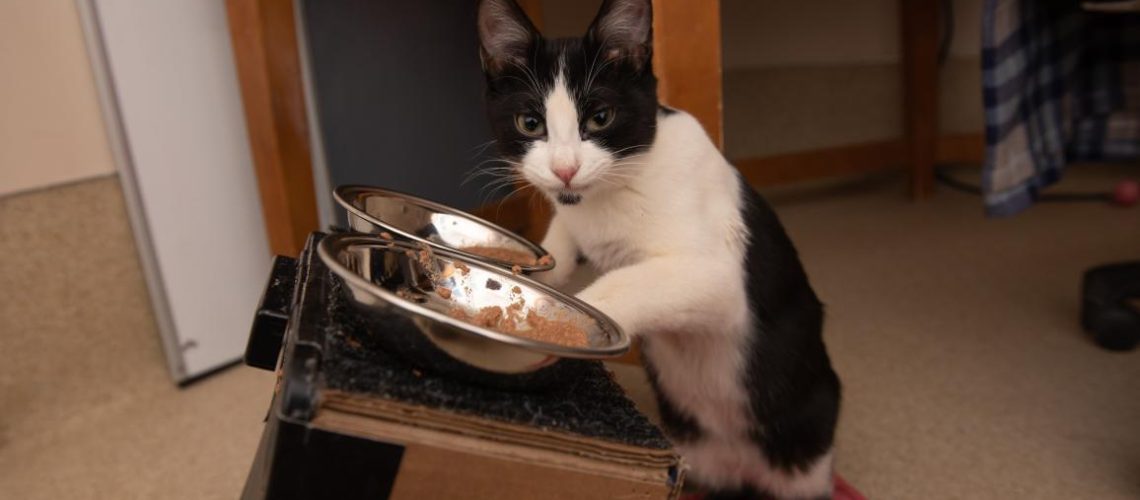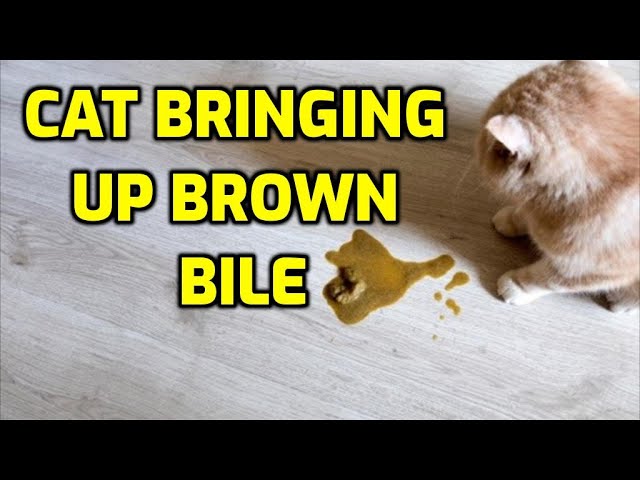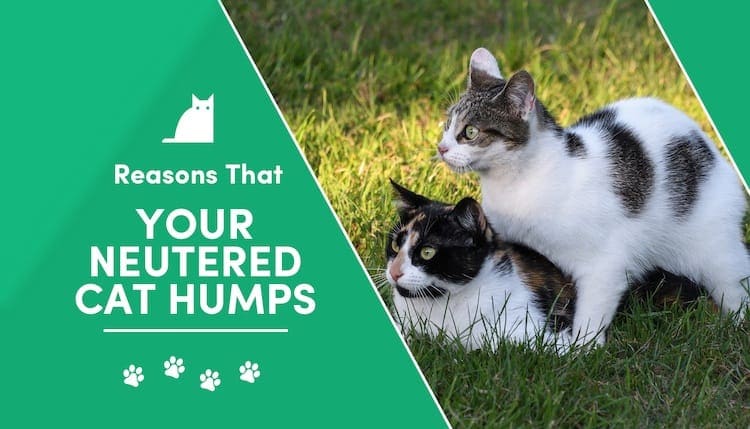Are you ready to unravel the mystery behind a puzzling health condition that affects our feline friends? Megaesophagus, the enigmatic ailment that perplexes cat owners and veterinarians alike, holds the key to understanding a crucial aspect of our furry companions' well-being.
By delving into this topic, you will gain valuable insights into how to provide optimal care for your beloved cats. Whether you are a curious pet owner or an aspiring veterinarian, exploring megaesophagus is essential for unlocking the secrets of feline health. So, let's embark on this captivating journey together as we uncover the intriguing world of megaesophagus and its impact on our whiskered companions. Get ready to be amazed by what lies ahead!
Key Takeaways:
- Megaesophagus is a condition in cats characterized by the enlargement and decreased motility of the esophagus.
- Common symptoms of megaesophagus in cats include regurgitation, weight loss, and difficulty swallowing.
- The exact cause of megaesophagus in cats is often unknown, but it can be congenital or acquired.
- Treatment for megaesophagus in cats focuses on managing symptoms and improving quality of life through dietary modifications and feeding techniques.
- Regular monitoring and follow-up with a veterinarian are crucial for managing megaesophagus in cats and preventing complications.
What is Megaesophagus and How Does it Affect Cats?
Megaesophagus is a condition that affects a cat's esophagus, which is the tube that carries food from the mouth to the stomach. In cats with megaesophagus, their esophagus becomes enlarged and loses its ability to properly push food down into the stomach. This can lead to difficulty in swallowing and regurgitation of food.
When a cat has megaesophagus, they may have trouble keeping their food down and may vomit or regurgitate soon after eating. This can result in weight loss and malnutrition if not properly managed. The condition can also cause aspiration pneumonia, which occurs when food or liquid enters the lungs instead of going into the stomach.
How does megaesophagus affect cats?
Megaesophagus affects cats by interfering with their ability to eat and digest food properly. When a cat has megaesophagus, their esophagus becomes weak and stretched, making it difficult for them to swallow food. This can lead to frequent regurgitation of undigested food, as well as weight loss and malnutrition.
In severe cases, megaesophagus can also cause aspiration pneumonia. When a cat regurgitates food, there is a risk that some of it will enter their airway and lungs instead of going into their stomach. This can lead to inflammation and infection in the lungs, which can be life-threatening if not treated promptly.
Symptoms of Megaesophagus in Cats: Explained in Simple Terms
The symptoms of megaesophagus in cats are usually related to difficulties with eating and digestion. Some common symptoms include:
- Regurgitation: Cats with megaesophagus often regurgitate their food shortly after eating. This is different from vomiting, as regurgitated food is undigested and comes up without any effort or warning.
- Weight loss: Due to the inability to properly digest and absorb nutrients from food, cats with megaesophagus may experience weight loss.
- Coughing or gagging: Cats with megaesophagus may cough or gag frequently, especially after eating or drinking.
- Difficulty swallowing: Cats may show signs of discomfort or struggle when trying to swallow their food.
What are the symptoms of megaesophagus in cats?
The symptoms of megaesophagus in cats can vary, but some common signs to look out for include:
- Frequent regurgitation of undigested food
- Weight loss and poor body condition
- Coughing or gagging after eating
- Excessive drooling
- Bad breath (halitosis)
- Reluctance to eat or decreased appetite
When should you see a veterinarian?
If you notice any of these symptoms in your cat, it is important to consult a veterinarian. They can perform a thorough examination and recommend appropriate diagnostic tests to determine if your cat has megaesophagus or another underlying condition.
Early diagnosis and treatment are crucial for managing the condition and preventing complications such as aspiration pneumonia.
Diagnosing Megaesophagus in Cats: What Veterinarians Look for
Veterinarians diagnose megaesophagus in cats through a combination of physical examinations, medical history review, and diagnostic tests. During the physical examination, the vet will observe the cat's behavior, check for any signs of weight loss or dehydration, and listen to their heart and lungs.
To confirm the diagnosis of megaesophagus, veterinarians often use imaging techniques such as X-rays or fluoroscopy. These tests allow them to visualize the size and shape of the esophagus, as well as any abnormalities that may be present.
How do veterinarians diagnose megaesophagus in cats?
Veterinarians use a combination of methods to diagnose megaesophagus in cats:
1. Physical examination: The vet will assess the cat's overall health, check for signs of weight loss or dehydration, and listen to their heart and lungs.
2. Medical history review: They will ask questions about the cat's eating habits, symptoms, and any previous medical conditions.
3. Imaging tests: X-rays or fluoroscopy are commonly used to visualize the esophagus and identify any abnormalities.
Why are imaging tests important?
Imaging tests like X-rays or fluoroscopy are crucial for diagnosing megaesophagus because they allow veterinarians to see the size and shape of the esophagus. This helps confirm if it is enlarged or dilated, which is a characteristic feature of megaesophagus.
In some cases, additional tests such as bloodwork or endoscopy may be recommended to rule out other potential causes of similar symptoms.
Common Causes of Megaesophagus in Cats: Important Factors to Know
Megaesophagus in cats can be caused by various factors, including congenital abnormalities, acquired diseases, and certain medications. Congenital megaesophagus is present at birth and is often due to a developmental defect in the esophagus. This condition may be inherited or occur spontaneously. Acquired megaesophagus, on the other hand, develops later in life and can be caused by conditions such as myasthenia gravis, hypothyroidism, or esophageal tumors.
In some cases, certain medications can also lead to megaesophagus in cats. These medications may include drugs that relax the muscles of the esophagus or those that affect nerve transmission. It's important to note that megaesophagus can also be secondary to other underlying diseases or conditions. Therefore, it is crucial for veterinarians to thoroughly evaluate the cat's overall health and conduct diagnostic tests to identify any potential underlying causes.
Congenital Megaesophagus:
Congenital megaesophagus occurs when a kitten is born with an abnormality in their esophagus. This condition is usually caused by a lack of proper development during fetal growth. The esophagus may be narrower than normal or have weak muscles that are unable to propel food down into the stomach effectively. Kittens with congenital megaesophagus often experience difficulty swallowing and regurgitate food shortly after eating.
Acquired Megaesophagus:
Acquired megaesophagus develops later in a cat's life and can be caused by various underlying conditions. One common cause is myasthenia gravis, a neuromuscular disorder where there is a breakdown in communication between nerves and muscles. When this occurs in the esophageal muscles, it leads to a weakened or paralyzed esophagus, resulting in megaesophagus. Other potential causes of acquired megaesophagus include hypothyroidism, where the decreased production of thyroid hormones affects muscle function, and esophageal tumors that obstruct the passage of food.
Medications and Megaesophagus:
Certain medications can also contribute to the development of megaesophagus in cats. These medications may include muscle relaxants or drugs that affect nerve transmission. Muscle relaxants can cause the muscles of the esophagus to become too relaxed, leading to ineffective movement of food. Medications that affect nerve transmission can disrupt the signals between nerves and muscles, impairing proper esophageal function.
It is important for cat owners to be aware of these potential causes so they can work closely with their veterinarian to identify and address any underlying conditions contributing to their cat's megaesophagus. By understanding the causes, appropriate treatment plans can be developed to manage this condition effectively and improve the quality of life for affected cats.
Treatments for Cats with Megaesophagus: What Can Help?
Treatment options for cats with megaesophagus aim to alleviate symptoms, prevent complications, and improve overall quality of life. While there is no cure for megaesophagus, various management strategies can help cats live comfortably with this condition.
One common approach is feeding modifications. Cats with megaesophagus often benefit from being fed in an upright position using elevated feeding stations or special feeding chairs designed specifically for this purpose. This helps gravity assist in moving food down into the stomach and reduces the risk of regurgitation. Feeding smaller meals more frequently throughout the day can also be beneficial as it reduces the volume of food in each meal, making it easier for the weakened esophageal muscles to handle.
Feeding Modifications:
Feeding modifications play a crucial role in managing megaesophagus in cats. By altering the way food is presented and consumed, the risk of regurgitation and aspiration pneumonia can be minimized. Elevated feeding stations or specially designed chairs allow gravity to aid in moving food down into the stomach, reducing the likelihood of food getting stuck in the esophagus. Feeding smaller, more frequent meals helps prevent overloading the weakened esophageal muscles.
Medications:
In some cases, medications may be prescribed to manage underlying conditions contributing to megaesophagus or to alleviate symptoms associated with this condition. For example, if myasthenia gravis is present, medications that improve nerve-muscle communication may be recommended. Medications that reduce acid production in the stomach can also be beneficial in preventing reflux and further irritation of the esophagus.
Surgical Options:
In severe cases where conservative management approaches are not effective, surgical options may be considered. These procedures aim to improve esophageal function by either removing obstructions or creating a bypass for food to reach the stomach directly. However, surgery is typically reserved for specific situations and should be discussed thoroughly with a veterinarian.
While there is no one-size-fits-all treatment plan for cats with megaesophagus, a combination of feeding modifications, medication management, and close monitoring can significantly improve their quality of life. It is essential for cat owners to work closely with their veterinarian to develop an individualized treatment approach tailored to their cat's specific needs.
Preventing Megaesophagus in Cats: Tips to Keep Your Feline Friend Healthy
While it may not always be possible to prevent megaesophagus in cats due to congenital factors or certain underlying conditions, there are steps cat owners can take to promote overall health and potentially reduce the risk of developing this condition.
One important aspect is maintaining a balanced and nutritious diet. Providing cats with high-quality, easily digestible food can help support their overall gastrointestinal health. Avoiding excessive consumption of dry kibble, which may be harder to swallow and digest, can also be beneficial. Wet or moistened food can be easier for cats with megaesophagus to consume and pass through the esophagus.
Dietary Considerations:
When it comes to feeding cats with megaesophagus, certain dietary considerations can make a significant difference. Opting for wet or canned food instead of dry kibble helps ensure that the food is already moistened, reducing the risk of choking or obstruction in the esophagus. Additionally, smaller and more frequent meals throughout the day are easier for cats with weakened esophageal muscles to handle.
Regular Veterinary Check-ups:
Regular veterinary check-ups are essential in detecting any underlying conditions that may contribute to megaesophagus. Routine examinations allow veterinarians to monitor a cat's overall health, identify potential issues early on, and provide appropriate preventive care measures. Vaccinations, parasite control, and dental care are all vital components of maintaining a cat's well-being.
Environmental Safety:
Creating a safe environment for cats is crucial in preventing accidents or injuries that could potentially lead to megaesophagus. Keeping toxic substances out of reach, ensuring there are no small objects that could be swallowed accidentally, and providing appropriate supervision during playtime can all help minimize risks.
While it may not always be possible to prevent megaesophagus entirely, taking these preventive measures can contribute to promoting a healthier lifestyle for cats and potentially reduce the likelihood of developing this condition.
Megaesophagus in Cats: Is it a Lifelong Condition or Can it be Cured?
Megaesophagus is typically considered a lifelong condition in cats as there is currently no known cure. However, with appropriate management and treatment, cats with megaesophagus can lead fulfilling lives.
Lifelong Management:
Managing megaesophagus in cats requires a lifelong commitment from both the cat owner and the veterinarian. Regular veterinary check-ups are essential to monitor the cat's condition, adjust treatment plans if necessary, and address any potential complications promptly. Feeding modifications, medication management, and close monitoring of symptoms are all crucial aspects of lifelong management.
Quality of Life:
While megaesophagus may present challenges for cats, it is possible to improve their quality of life through proper care and support. Feeding modifications that reduce regurgitation and aspiration risks can significantly enhance comfort during mealtime. Medications targeted at managing underlying conditions or alleviating symptoms can also contribute to a better quality of life.
Supportive Care:
In addition to medical interventions, providing supportive care is vital for cats with megaesophagus. This includes creating a calm eating environment free from distractions or stressors that could interfere with swallowing. Regular exercise tailored to the cat's abilities helps maintain overall muscle tone and promotes gastrointestinal motility.
While there may not be a cure for megaesophagus in cats, the combination of lifelong management strategies, supportive care, and regular veterinary oversight can help cats with this condition live happy and comfortable lives.
In conclusion, megaesophagus is a condition that affects a cat's ability to swallow food properly. It can be challenging to diagnose and manage, but with proper care and support from veterinarians, cats with megaesophagus can live happy and comfortable lives.
How can I help my cat with megaesophagus?
There are various kinds of medication available to treat megaesophagus. Your cat may be given Metoclopramide, which helps to stimulate movement in the gastrointestinal tract. Your vet may also suggest giving your cat an antacid or anti-nausea medication to keep them comfortable and avoid any damage to the esophagus.
What is the best food for a cat with megaesophagus?
The diet of a pet with megaesophagus should be in a form that can easily pass through the esophagus without getting stuck. Many find that a smoothie, moist porridge, or other soft consistency is suitable, although you may need to experiment to find what works best for your specific pet.
Can a cat live with megaesophagus?
Megaesophagus in cats is typically seen in young to middle-aged adults. The prognosis and lifespan of cats with megaesophagus depend on the specific form and underlying condition, as well as the occurrence of aspiration pneumonia.
How does a cat get megaesophagus?
Examining Megaesophagus in Cats: When the esophagus loses its ability to effectively transport food to the stomach, partially digested food can accumulate, resulting in the enlargement of the tract. If this condition persists, it can lead to a long-term dilation of the esophagus known as megaesophagus.
Can megaesophagus go away on its own?
Unfortunately, there is currently no known cure for megaesophagus in dogs and cats. However, the condition can be managed through treating the underlying cause, if one is present, as well as any complications that may arise from the megaesophagus, such as aspiration pneumonia. This approach can help improve the quality of life for animals with this condition.
Can megaesophagus heal?
If the root cause of the problem can be addressed and treatment is started early, the esophagus may regain its ability to move and megaesophagus may decrease. However, in many instances, megaesophagus is a chronic condition that requires ongoing management.

















